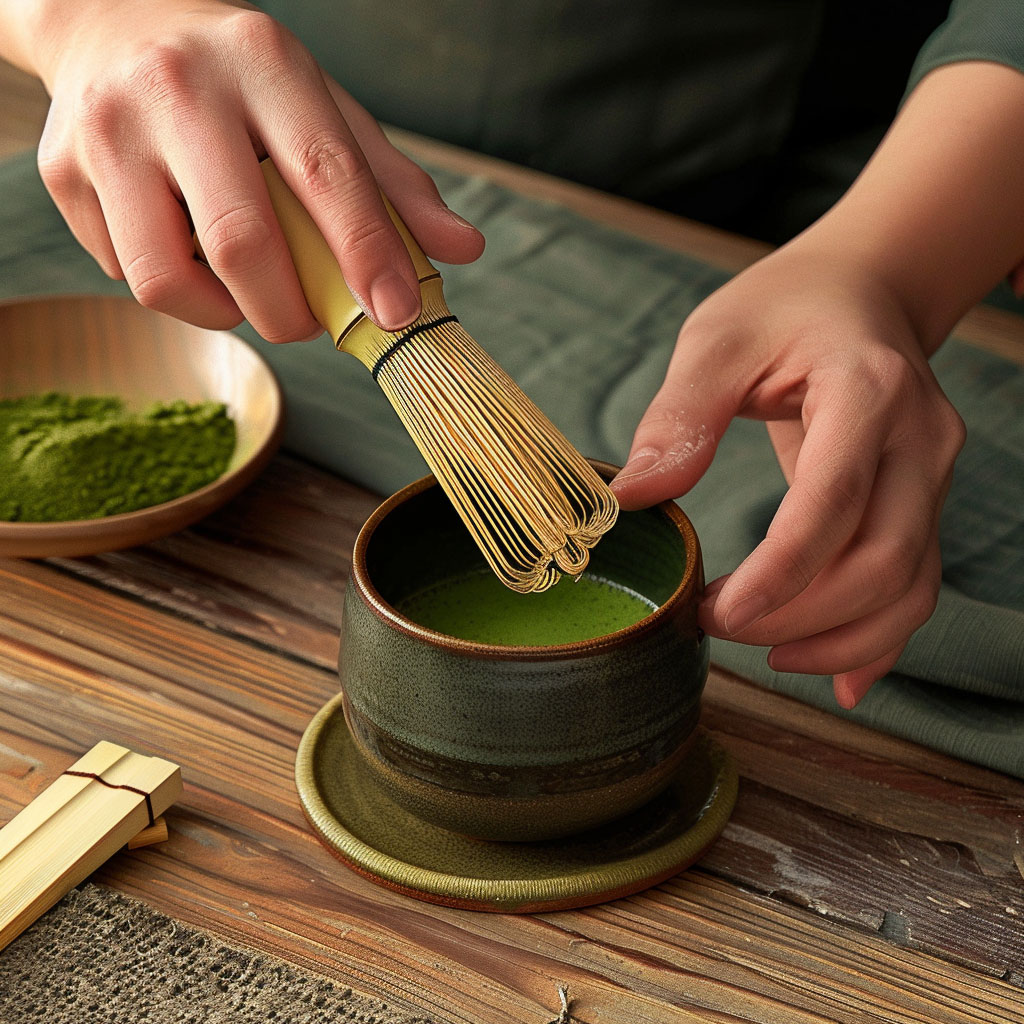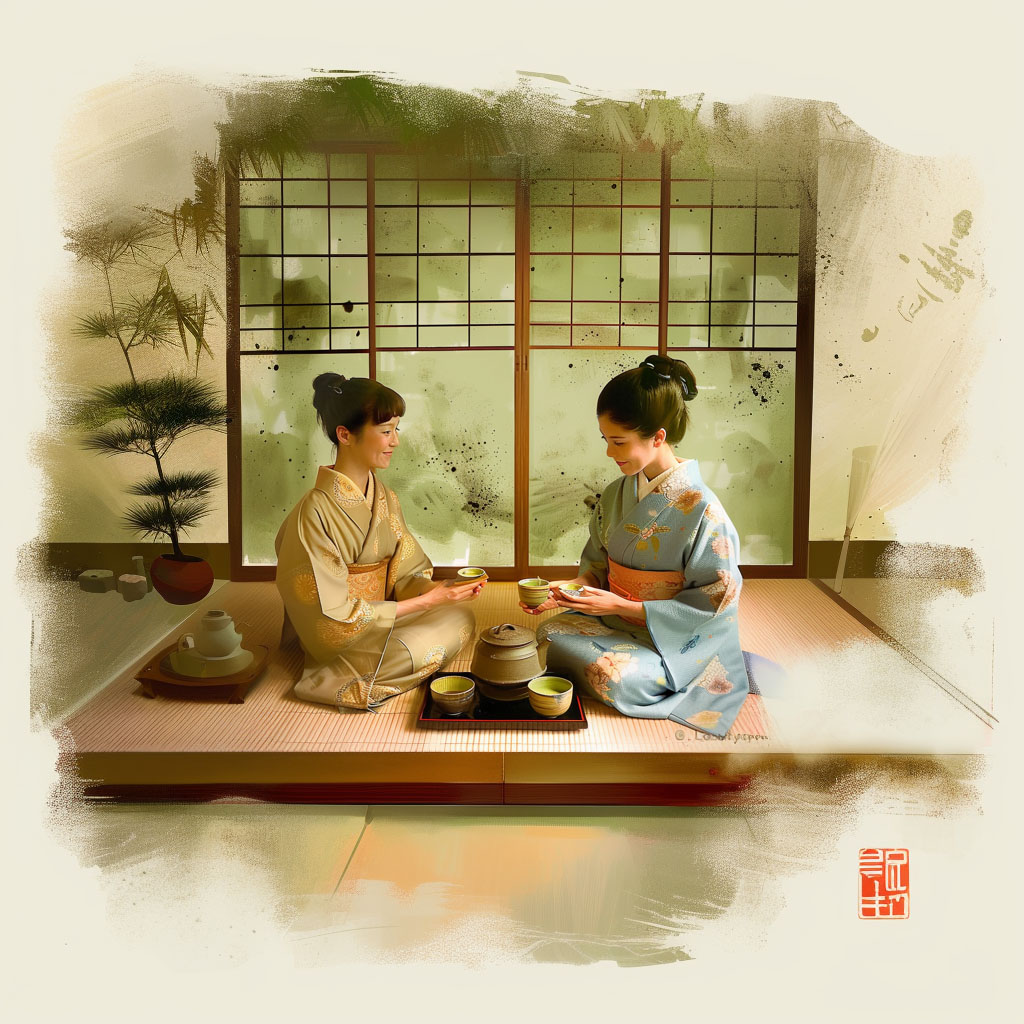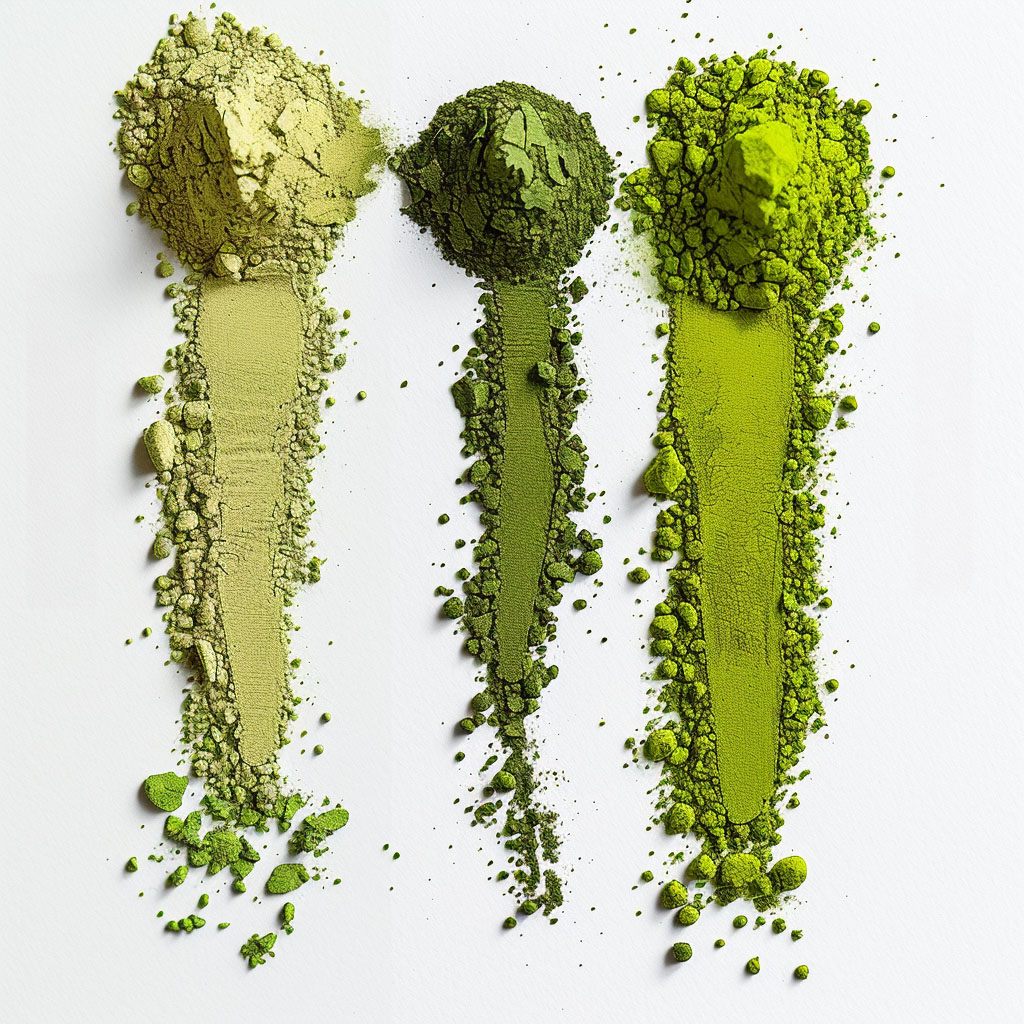
Wholesale/Bulk Ceremonial Matcha Options
You can now purchase Ceremonial Matcha in wholesale and bulk quantities from Shanti Tea Importers, making it an ideal option for tea retailers and brands in the United States and Canada. This matcha, known for its vibrant green colour, smooth texture, and rich umami flavour, offers an authentic and premium experience that matcha enthusiasts cherish. Additionally, it is available for private and white-label customization, allowing you to tailor the packaging and branding to suit your specific needs. By partnering with Shanti Tea Importers, you can provide customers with a high-quality, enjoyable matcha while enhancing your brand's product offerings.
What is Ceremonial Matcha?
Ceremonial Matcha is a high-grade green tea powder traditionally used in Japanese tea ceremonies. It is made from the finest young tea leaves, carefully cultivated, handpicked, and stone-ground into a vibrant green powder. This matcha is known for its smooth, rich, and slightly sweet flavour, as well as its creamy texture and bright green colour.
Key characteristics of Ceremonial Matcha include:
- Quality and Purity: Only the youngest, most tender leaves from the top of the tea plant are used, ensuring the highest quality and most delicate flavour.
- Processing: The leaves are shaded before harvesting to increase chlorophyll and amino acid content. They are then steamed, dried, and ground into a fine powder using traditional stone mills.
- Flavour Profile: Ceremonial Matcha has a rich, umami taste, natural sweetness, and a slightly vegetal, grassy undertone. It is smooth and free of bitterness.
- Usage: It is typically whisked with hot water using a bamboo whisk (chasen) to create a frothy, vibrant green tea. Ceremonial Matcha is meant to be enjoyed independently, without added milk or sweeteners, to fully appreciate its nuanced flavours.
- Health Benefits: Rich in antioxidants, particularly catechins, it also contains amino acids like L-theanine, which promotes relaxation and focus. It is also a source of vitamins, minerals, and fibre.
Ceremonial Matcha is cherished for its cultural significance, exquisite taste, and numerous health benefits, making it a prized choice for tea connoisseurs and health enthusiasts.

What is a Japanese tea ceremony?
A Japanese tea ceremony, also known as "chanoyu" (茶の湯), "sado" (茶道), or "chado" (茶道), is a traditional ceremonial preparation and presentation of matcha (powdered green tea). It is a deeply spiritual and cultural practice that embodies the principles of harmony, respect, purity, and tranquillity. The tea ceremony is not just about drinking tea; it's a meditative practice that reflects Japanese aesthetics, values, and social etiquette.
Key Elements of the Japanese Tea Ceremony
- Setting: The ceremony usually takes place in a tea room or a dedicated tea house to promote peace and simplicity. The environment is carefully curated to reflect natural beauty, with minimalistic decor and elements such as tatami mats, sliding paper doors, and a tokonoma (alcove) displaying a scroll or flower arrangement.
- Participants: Typically, the ceremony involves a host (the person preparing the tea) and one or more guests. Each participant has specific roles and behaviours to follow, emphasizing respect and mindfulness.
- Utensils and Tools
:
- Chawan (Tea Bowl): Used to whisk and drink the matcha.
- Chasen (Bamboo Whisk): Used to mix the matcha with hot water.
- Chashaku (Tea Scoop): Used to measure the matcha powder.
- Natsume or Chaire (Tea Caddy): Used to store the matcha powder.
- Kama (Iron Kettle): Used to boil water.
- Hishaku (Ladle): Transfer water from the kettle to the tea bowl.
- Procedure:
- Greeting and Cleansing: The host greets the guests and performs a ceremonial cleansing of the utensils, symbolizing purity and respect.
- Preparation of Matcha: The host carefully measures and sifts the matcha powder into the tea bowl, adds hot water and uses the chasen to whisk the tea to a frothy, smooth consistency.
- Serving and Drinking: The host serves the prepared matcha to the guests, who receive it with a bow. Each guest takes a sip, savours the flavour, and admires the bowl before passing it to the next guest.
- Appreciation and Conversation: After drinking, guests may converse about the tea, the utensils, or the seasonal theme of the gathering.
- Closing: The host cleans the utensils again, and the ceremony concludes with expressions of gratitude and bows.
Cultural and Philosophical Significance
The Japanese tea ceremony is a profound cultural practice beyond the mere act of drinking tea. It encapsulates the essence of Japanese philosophy and aesthetics, emphasizing the beauty of simplicity, the transient nature of life (wabi-sabi), and the importance of mindfulness and presence in each moment. The ceremony fosters a sense of connection between the host, the guests, and the environment, creating a harmonious and serene experience.

The Japanese tea ceremony is a timeless tradition that beautifully combines art, culture, and spirituality, offering participants tranquility and reflection in their busy lives.
What is the difference between regular matcha and ceremony matcha?
The differences between regular and ceremonial matcha primarily revolve around quality, taste, intended use, and production methods. Here's a detailed comparison:
Quality and Grade
Ceremonial Matcha:
- Made from the highest-quality young tea leaves from the top of the tea plant.
- Handpicked and carefully processed to maintain the highest level of quality.
- Vibrant green colour due to high chlorophyll content.
Regular Matcha:
- Typically made from older tea leaves or leaves from lower parts of the tea plant.
- The quality can vary widely but is generally lower than the ceremonial grade.
- Colour may be less vibrant and can appear duller.
Taste and Flavor Profile
Ceremonial Matcha:
- Smooth, rich, and naturally sweet with a balanced umami flavour.
- Minimal bitterness, allowing the pure flavour of the tea to shine.
- A delicate and complex taste meant to be enjoyed on its own.
Regular Matcha:
- It can have a more bitter or astringent taste.
- The flavour is less refined and complex compared to ceremonial matcha.
- Often used in recipes or mixed with other ingredients to mask bitterness.
Intended Use
Ceremonial Matcha:
- Specifically intended for traditional tea ceremonies.
- Consumed on its own, it is typically prepared with just hot water and whisked to a frothy consistency.
- Focused on the ritualistic and meditative aspects of tea drinking.
Regular Matcha:
- More versatile and commonly used in cooking and baking.
- Suitable for making matcha lattes, smoothies, desserts, and other culinary applications.
- Often combined with other ingredients, as the flavour can be more robust and less delicate.
Production Methods
Ceremonial Matcha:
- Before harvesting, leaves are shaded for several weeks to increase chlorophyll and amino acid content.
- Carefully steamed, dried, and ground using traditional stone mills to ensure a fine, smooth powder.
- Strict quality control to maintain purity and consistency.
Regular Matcha:
- Leaves may be shaded for a shorter period or not at all.
- The processing methods can be more industrial, potentially impacting flavour and texture.
- Ground using various methods might result in a coarser powder.
Price
Ceremonial Matcha:
- Generally, it is more expensive due to the higher quality of the leaves and the more labour-intensive production process.
- The price reflects the premium nature and the care taken in its production.
Regular Matcha:
- Typically, it is more affordable and available in larger quantities.
- Price varies depending on the quality and intended use but is usually lower than ceremonial grade.